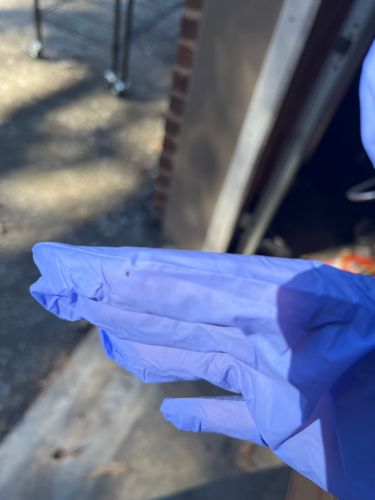Flea
Scientific Name: Siphonaptera (order - specific species not identifiable from image)
Order & Family: Order: Siphonaptera, Family: (various, e.g., Pulicidae)
Size: 1.5 mm to 3.3 mm (0.06 to 0.13 inches)

Natural Habitat
Fleas are external parasites that live on the bodies of warm-blooded animals, including mammals and birds. They can be found in pet bedding, carpets, upholstered furniture, and cracks in floors.
Diet & Feeding
Fleas are obligate hematophagous parasites, meaning both male and female adult fleas feed exclusively on the blood of their hosts.
Behavior Patterns
Fleas have a life cycle that includes egg, larva, pupa, and adult stages. They are known for their ability to jump long distances relative to their size. Adults spend most of their lives on a host, laying eggs that fall off into the environment. Larvae feed on organic debris, including adult flea feces (flea dirt).
Risks & Benefits
Risks: Fleas can cause intense itching, skin irritation (flea allergy dermatitis), and hair loss in pets. They can transmit diseases such as tapeworms (Dipylidium caninum) and Rickettsia typhi (murine typhus) to pets and humans. Historically, fleas were vectors for the bubonic plague (Yersinia pestis). Benefits: None for humans or domestic animals; they are primarily considered pests.
Identified on: 11/9/2025